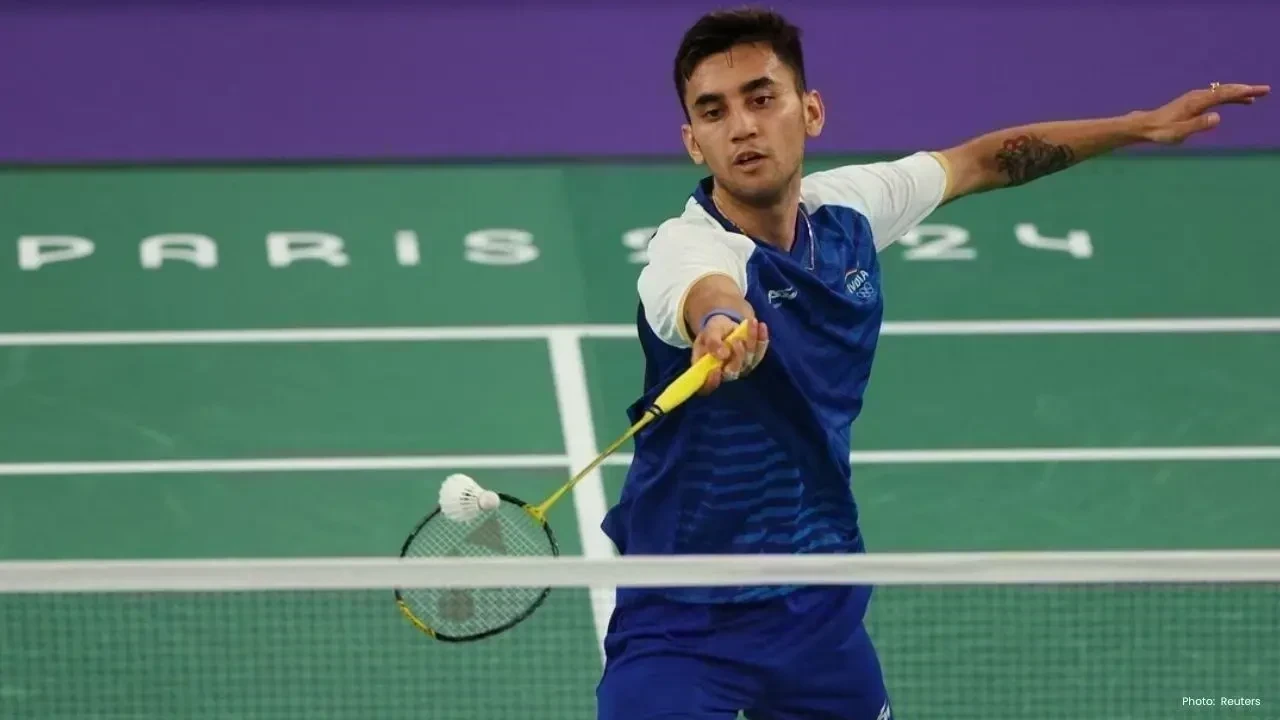
Post by : Anis Karim
USB-C has evolved from a promising new connector to the default interface for modern smartphones, tablets, laptops, monitors, accessories, and even household gadgets. Its appeal lies in its versatility — it supports fast charging, high-speed data transfer, video output, universal compatibility, and reversible orientation. For years, manufacturers gradually moved to USB-C voluntarily, influenced by convenience and the need for better performance.
However, voluntary adoption is no longer the only driver. Governments around the world have begun enforcing USB-C as a standardized connector for electronics, pushing companies to comply through regulation rather than preference. This transition marks one of the largest coordinated shifts in consumer-tech standards in the last decade.
The global push toward USB-C is rooted in efficiency, sustainability, and consumer protection. But the wave of enforcement emerging this year signals a turning point: USB-C is no longer merely popular — it is officially becoming mandatory in many places.
Multiple factors converged to accelerate the global shift toward USB-C regulation.
Electronic waste from outdated connectors and incompatible chargers has become a major worldwide problem. Universal connectors reduce the need for multiple cables and chargers, lowering waste.
Users have long complained about maintaining multiple charging cables. Governments recognized that standardisation would reduce cost and increase simplicity.
A universal port improves cross-border device compatibility, especially for travellers.
Some companies resisted adopting USB-C for proprietary reasons. Regulation eliminates inconsistencies.
The combination of environmental urgency and cross-market inefficiencies convinced governments that it was time to intervene.
The European Union played the biggest role in accelerating global USB-C regulations. Their decision to make USB-C mandatory for smartphones, tablets, e-readers, headphones, and portable gaming consoles set an international precedent.
Key elements include:
Devices must support USB-C for charging.
Manufacturers must offer uniform charging compatibility.
Consumers can buy devices without chargers to reduce waste.
Fast-charging standards must be interoperable.
The EU provided a transition window, but enforcement deadlines are now nearing, pressuring companies to comply worldwide — not just in Europe.
Many governments observed this move and began drafting similar mandates, creating a ripple effect across global markets.
Several Asian nations are adopting regulations inspired by or aligned with the EU.
India has announced timelines for USB-C adoption across smartphones and small electronics. The decision was driven by both sustainability concerns and the country’s huge consumer-electronics market.
The timeline includes:
USB-C requirement for smartphones
Standardisation for wearables and accessories
Special exemptions for low-power devices during initial rollout
India’s influence is strong, as manufacturers rely heavily on the Indian market.
China already dominates USB-C production worldwide, and internal adoption is widespread. While not framed as strict government policy yet, Chinese manufacturers have naturally aligned with USB-C due to cost efficiency and compatibility benefits.
These countries are evaluating USB-C mandates, particularly for smartphones, tablets, and gaming devices. Regulatory discussions highlight concerns about e-waste and consumer frustration with multiple chargers.
Asia is rapidly aligning itself with global USB-C norms, accelerating worldwide adoption.
The United States and Canada have not fully mandated USB-C yet, but discussions are underway.
Regulators and lawmakers are pushing agencies to explore the benefits of a universal charging standard. Arguments centre around:
cutting e-waste
protecting consumer rights
simplifying travel
reducing proprietary lock-in
While the U.S. traditionally avoids mandating specific tech standards, pressure is mounting as global markets shift.
Canada is studying the environmental benefits of universal chargers, referencing EU research. Adoption could occur within the next few years.
Though North America lags behind the EU in firm regulation, consumer demand is pushing companies to adopt USB-C across the board regardless.
Several countries in Latin America have begun advocating for USB-C standardisation, driven by high import volumes of electronics and the influence of EU regulations.
Countries exploring mandates include:
Brazil
Chile
Mexico
Argentina
Many electronics entering Latin America originate from manufacturers already preparing for EU compliance, making USB-C adoption smoother in the region.
Countries in the Middle East — including the UAE, Saudi Arabia, and Qatar — are increasingly aligning their consumer-electronics standards with global regulations. While formal mandates vary, industry consultation and import guidelines are trending toward USB-C compliance. Retailers already report higher demand for devices using universal charging ports.
Manufacturers face both opportunities and challenges as USB-C regulation spreads.
Companies that planned multi-year transitions are now accelerating their timelines.
Older devices with micro-USB or proprietary connectors are being discontinued.
Charger portfolios are being simplified to align with regulations.
Companies are adapting to ensure their fast-charge technologies work universally, reducing fragmentation across brands.
USB-C component suppliers are scaling up production to meet global demand.
Manufacturers who once resisted USB-C now embrace it to avoid regulatory penalties, consumer backlash, and compatibility issues.
For consumers, USB-C standardisation brings major advantages.
Users can charge multiple devices with a single cable.
No need to buy brand-specific chargers.
USB-C chargers work across borders and devices.
Universal fast-charging compatibility simplifies the experience.
Less e-waste improves sustainability on a global scale.
Consumers benefit significantly from this transition — but the shift may involve growing pains for older device users.
One of the core motivations behind global USB-C enforcement is environmental sustainability.
Standardisation helps reduce:
discarded proprietary chargers
duplicated cables
unused adapters
excessive packaging
By lowering the number of unnecessary accessories produced and discarded, USB-C standardisation can meaningfully cut electronic waste, an urgent global challenge.
Despite the widespread support for USB-C enforcement, the movement faces challenges.
Some companies use proprietary technologies that may not integrate seamlessly with universal USB-C standards.
Critics argue that mandating specific ports may hinder future connector innovation.
Updating supply chains and redesigning devices can be expensive.
Budget devices might require technical redesigns to support USB-C ports.
Despite these challenges, most market observers believe the long-term benefits outweigh the drawbacks.
USB-C is expected to remain the dominant standard for several years, but technological evolution continues.
Future connectors may combine higher power delivery and greater bandwidth.
As wireless charging becomes more efficient, some manufacturers may move toward portless designs. But global enforcement of USB-C may delay this shift.
Unified charging protocols may become mandatory in the future.
Governments may introduce rules ensuring cable quality and preventing overheating hazards.
USB-C is dominant now, but the story of charging technology is far from over.
The USB-C enforcement wave is more than a regulatory trend — it represents a fundamental shift in how the world approaches tech compatibility. It reshapes:
manufacturing strategies
product design
environmental policy
international trade
consumer expectations
For the first time, countries across multiple continents are uniting around a universal technology standard, reducing fragmentation and increasing digital harmony.
The global USB-C standardisation movement marks a major step toward a more unified, sustainable, and user-friendly digital ecosystem. With governments enforcing the change, manufacturers adapting product lines, and consumers embracing the convenience, USB-C has become the global charging and data-transfer backbone.
While challenges exist — from proprietary standards to innovation concerns — the advantages for consumers, the environment, and the global market are undeniable. The momentum behind USB-C regulatory enforcement continues to grow, signalling a world where charging cables are finally consistent, simple, and universal.
This article provides general insights into ongoing global USB-C standardisation trends. Policies may vary across countries, and manufacturers may adopt different timelines. Readers should refer to regional regulations and manufacturer details for precise requirements.

Saudi Arabia Shines Bright at Islamic Solidarity Games 2025
With 57 medals, Saudi Arabia excels at the Islamic Solidarity Games 2025, celebrating its achievemen

Over 300 Students, Staff Kidnapped from Nigerian Boarding School
More than 300 students and staff were kidnapped from a Nigerian school, prompting President Tinubu t

Shilpa Shetty & Raj Kundra Celebrate 16 Years of Love
Shilpa Shetty and Raj Kundra mark their 16th wedding anniversary with a funny, heartwarming video ce

Smriti Mandhana & Palash Muchhal’s Vibrant Pre-Wedding Festivities
Smriti Mandhana and Palash Muchhal dazzle fans with colorful mehendi and haldi celebrations, countin

Taijul Islam Becomes Bangladesh’s Top Test Wicket-Taker
Taijul Islam became Bangladesh’s leading Test wicket-taker with 248 wickets, surpassing Shakib Al Ha

Bavuma Becomes Second-Fastest SA Captain to 1,000 Test Runs
South Africa skipper Temba Bavuma reaches 1,000 Test runs in 20 innings, second-fastest after Graeme

Tyson Shuts Nebraska Beef Plant Amid Historic Cattle Shortage
Tyson Foods to close Nebraska beef plant as U.S. cattle hit 75-year low, pressuring meat prices and

Taijul Islam Becomes Bangladesh’s Top Test Wicket-Taker
Taijul Islam became Bangladesh’s leading Test wicket-taker with 248 wickets, surpassing Shakib Al Ha

Bavuma Becomes Second-Fastest SA Captain to 1,000 Test Runs
South Africa skipper Temba Bavuma reaches 1,000 Test runs in 20 innings, second-fastest after Graeme

Indian Shuttler Lakshya Sen Beats Chou Tien Chen in Semifinal
Lakshya Sen beats world No. 6 Chou Tien Chen in a thrilling 3-game semifinal to reach Australian Ope

Manuel Arias Banned by FIFA Weeks Before 2026 World Cup
FIFA bans Panama football president Manuel Arias for six months and fines him for not respecting a p

France to Face Brazil and Colombia in World Cup Friendly Games
France will play friendly matches against Brazil and Colombia in March 2026 in the US, ahead of the

Australia Win First Ashes Test with Travis Head’s Century
Travis Head scores 123 to guide Australia to an eight-wicket win over England in Ashes opener. Head

Australia Crush England in First Ashes Test at Perth Stadium
Australia stunned England in the first Ashes Test with Head's century and Starc and Boland taking ke

Sydney Sixers Beat Hobart Hurricanes to End Their Winning Streak
Sydney Sixers defeated the unbeaten Hobart Hurricanes by 11 runs, powered by Ash Gardner’s brilliant